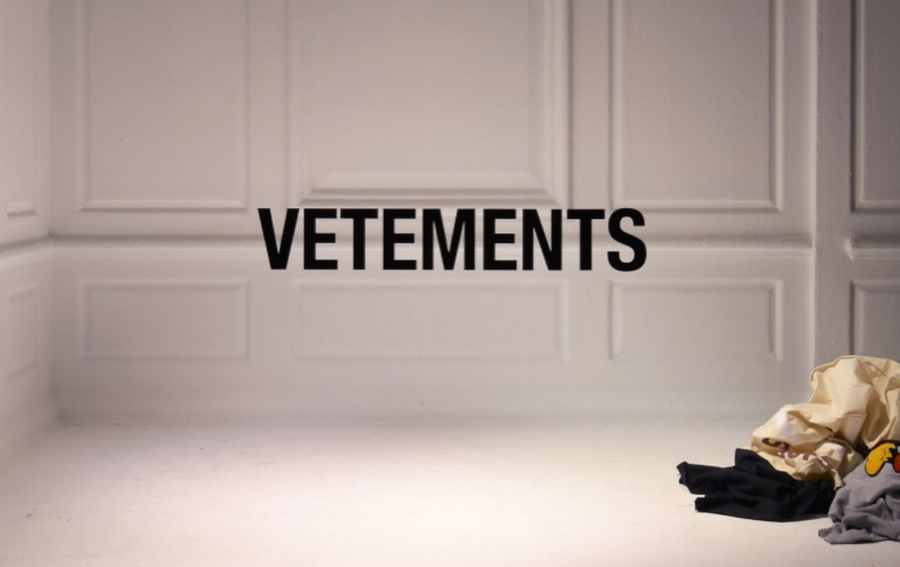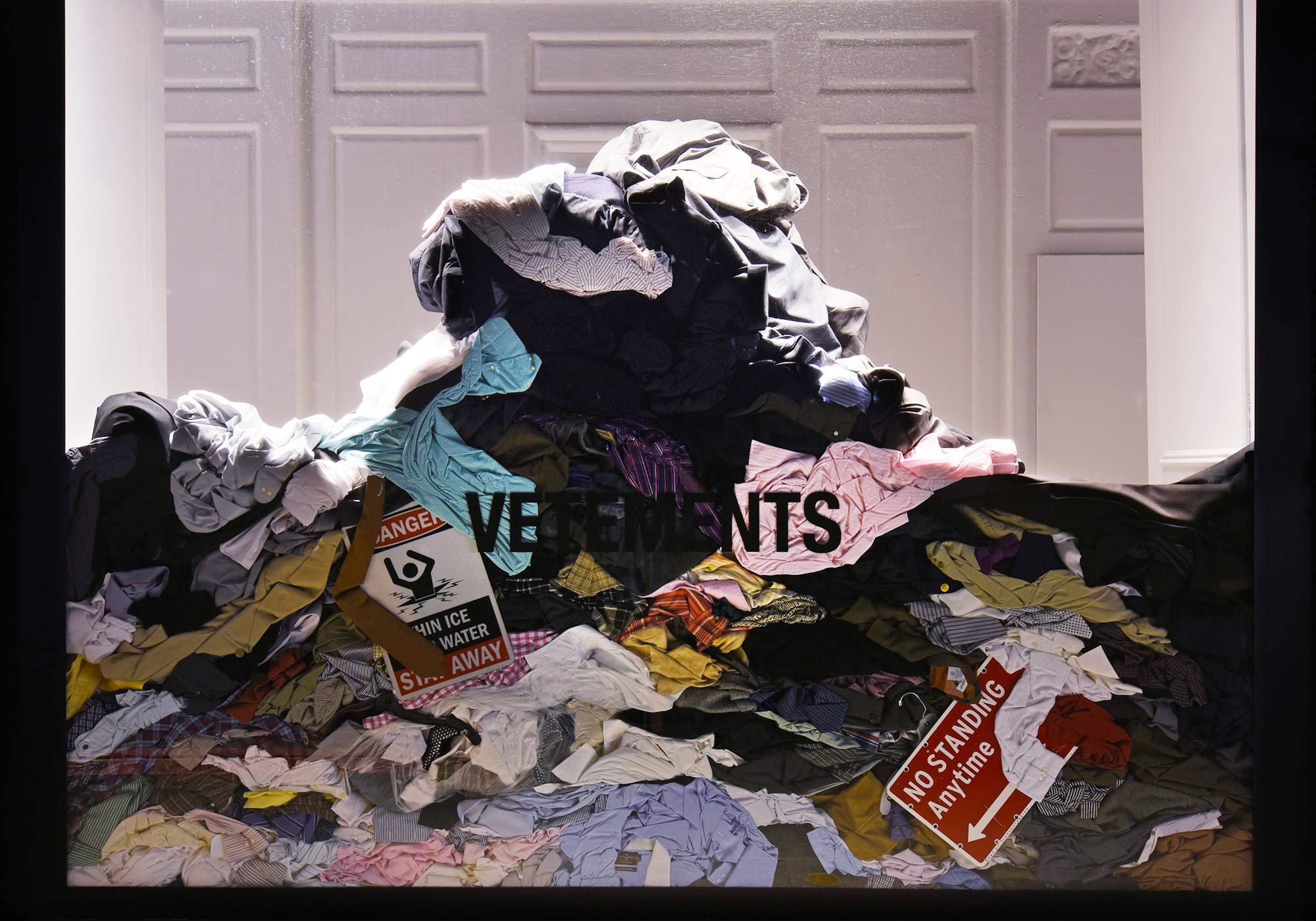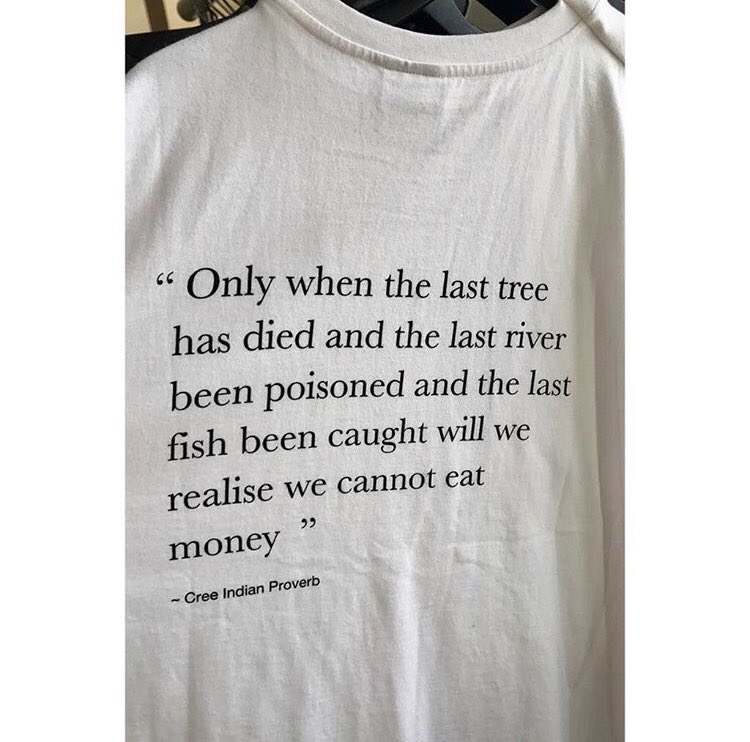
image: Saks
Saks Fifth Avenue’s New York flagship currently boasts some unusual windows: Mounts of clothes are starting to fill the windows on Fifth Avenue, complete with hangers, street signs, shoes, and loose plastic in the mix. The display comes courtesy of Paris-based “it” brand, Vetements. The garments themselves – which are not Vetements – have been piling up since the installation of the windows earlier this month, thanks to Saks employees (who have donated clothes) and also old, unsold Saks merchandise.
The mounds of unwanted garments will continue to grow until August 10, at which point Saks x Vetements will donate it all to RewearAble, a New York-based nonprofit organization aimed promoting sustainability through the recycling of clothing and per Saks, “designed to provide sustainable employment for adults with developmental disabilities.”
According to a statement from Saks, “Using unwanted clothing, the windows are a bold statement by Vetements calling us all to offset the excess in our lives.”

This is not the first time that Vetements has put forth commentary on consumerism and waste within the fashion system. As Vetements CEO Guram Gvasalia said on the heels of the Fall/Winter 2017 shows this past March, “I think we’re at a point of conspicuous production. Consider the whole situation with garbage in the world. We’re producing so much garbage in this world. And I don’t want to call clothes garbage; but for me, it’s wasteful. In a world full of garbage, we produce more and produce more, that at the end of the day, no one needs anymore.”
A season before, he took on the topic of trend-based fashion, telling consumers, “Stop buying things you don’t need. Start buying clothes you can cherish for years. Go away from fast fashion. Stop looking for bargains. Start looking for quality. Move towards the idea of slow fashion.”
Before we categorize the Saks collab – and the impeding overpriced Cree Indian proverb tees from Vetements’ F/W 2017 collection that read, “Only when the last tree has died and the last river been poisoned and the last fish been caught will we realise we cannot eat money” – as “a very cool thing” for Vetements to do (vs. a move to capitalize on the “trend” of sustainability), it is worth noting that the Vetements’ narrative regarding “offsetting the excess in our lives” should be taken with a heavy dose of skepticism, as it is unclear that the brand’s narrative reconciles with its actual model.

For instance, Gvasalia’s thoughts on fast fashion and his inherent suggestion that we move away from season/trend-specific garments (“Start buying clothes you can cherish for years.”) are particularly questionable – coming from him – as Vetements’ most popular offerings to date (think: DHL-logo tees, more DHL-logo tees, Titanic sweatshirts, sock boots(!!), etc.) have been highly dependent on a traditional model of trends and the regular phasing out of garments in favor of new, more season-specific garments.
Moreover, telling people to “stop buying things that don’t need” is also a point of contention, as it seems hard to believe that anyone needs anything being put forth by Vetements, not even their hot-selling $100+ socks.
As for whether talking about slow fashion and advancing notions of sustainability without working it into your business model in any significant way (aside from a collab with a retailer that stocks your garments and accessories – for the purpose of selling more pricey, trend-specific garments and accessories) is actually the newest trend in fashion, it seems pretty likely.







